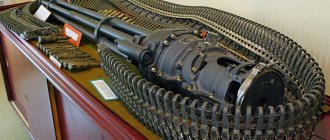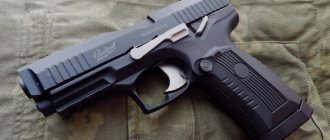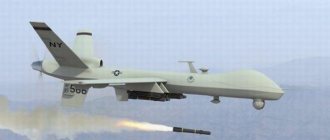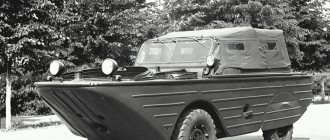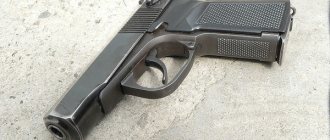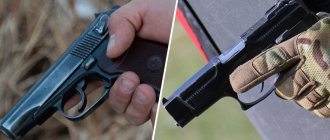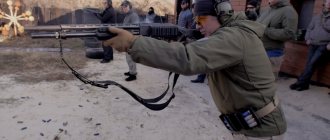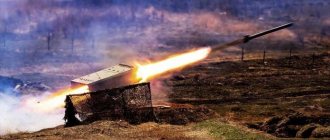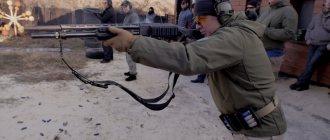Combat use of the Su-25
The main theater of operations for the Su-25 was Afghanistan.
Over the entire period of operation (in Afghanistan), the aircraft made about 60,000 combat sorties, an average of 3,000 sorties per aircraft, performing 6 - 8 combat sorties per day. At the same time, the high combat and flight qualities of the aircraft were demonstrated, as well as its unpretentiousness, powerful safety system and high maintainability. During the entire war in Afghanistan, 23 attack aircraft were lost and this was in almost 9 years! OKB P.O. Sukhoi gained vast experience in operating the Su-25 in combat conditions. During the fighting in Afghanistan, there was not a single case of tank explosions or the loss of an aircraft due to the death of a pilot. Moreover, there is a known case when the plane was shot down only by the second missile, and the pilot was saved by the armor protection of the cockpit and canopy. Statistics show that Su-25 aircraft had one combat loss per 80-90 combat damage, which is 4-6 times better than other types of aircraft.
!!Modifications of Su-25
- (Su-25TM)
- Su-25UB
Interesting facts about the attack aircraft
A curious incident occurred on March 30, 2016 in Primorye.
The Su 25 plane was landing at the Chernigovka military airfield, and suddenly fell before reaching the runway; the pilot managed to eject. The car collapsed on outbuildings in the courtyard of a private house, damaging the garage, and killing 50 chickens. The plane crashed into the cellar, destroying the owner's supplies. The military, according to the victim, promised to compensate for the damage caused. During the war in Afghanistan on October 24, 1987, when attacking targets near the village of Kobay in the first entry into Su 25, Lieutenant P.N. Golubtsov was hit by a MANPADS shell and tore off half of the tail unit. A fire started in the engine, which was partially extinguished; the pilot decided to land the plane at his airfield.
Having reached the runway on one engine, Lieutenant Golubtsov landed, but the braking system did not work and he had to direct the plane to the ground to slow down the car. Lieutenant Pyotr Golubtsov was awarded the Order of the Red Banner of Battle. During the war in Afghanistan, only 23 vehicles were lost. The survivability of the Rooks (as the pilots called the Su 25) is phenomenal. A unique record was set by the plane, which after landing counted 165 holes.
Su 25
In total, during the fighting in Afghanistan, 139 guided missile launches were carried out and 137 of them hit the target. The Iraqi government removed the Su 25 from service in 2003, and in 2014 again purchased these vehicles from the Russian Federation and Iran, realizing that this attack aircraft was perfectly suited for combat operations against ISIS militants.
Russia plans to keep Su 25 aircraft in service with the Aerospace Forces until 2020. Thus, decades later, the design talent of the engineers who created such an irreplaceable attack aircraft was confirmed.
Su 25
Brief information about the development
Thus, the troops urgently needed a specialized aircraft. The Sukhoi Design Bureau soon provided the T-8 project, which was developed by engineers on their own initiative. In addition to it, in 1969 the Il-102 was present at the competition, but the future “Rook” differed favorably from it in its small dimensions, armor and maneuverability. That is why the “kitchen” development was given the green light, and the new attack aircraft passed all tests with honor. This was largely due to the fact that the designers applied the principle of maximum survivability of a combat vehicle in all possible conditions when creating it.
History of creation
Work on the creation of the Su-25 attack aircraft began at the Sukhoi Design Bureau in the mid-70s on an initiative basis, when it became clear that the decision made in 1956 to abolish attack aircraft and transfer its functions to fighter-bombers was erroneous. The chief designer in the group of creators of the Su-25 was the former commander of the T-34 tank, one of the most brilliant aircraft designers of the 20th century, Oleg Sergeevich Samoilovich (1926-1999)
During the development of the attack aircraft, research and development work was carried out on 40 topics, about 600 samples and mock-ups were manufactured and tested. In February 1975, the prototype of the attack aircraft, which had the working designation T-8, was lifted into the air, and in 1980 the attack aircraft was adopted by the USSR Air Force under the designation Su-25. In 1981, a Su-25 squadron of 12 vehicles already took part in combat operations in Afghanistan.
Machine security
All the flight performance characteristics of the SU-25 attack aircraft would cost little if not for the degree of protection of the vehicle. And this level is high. More than 7% of the Grach's take-off weight consists of armor elements and other protective systems. The weight of this stuff is more than a ton! All vital flight systems are not only maximally protected, but also duplicated
But the developers from the Sukhoi Design Bureau paid the main attention to protecting the fuel system and the pilot’s cabin.
Its entire capsule is made of titanium alloy ABVT-20. The thickness of the armor ranges (in different places) from 10 to 24 mm. Even the windshield is a monolithic block TSK-137 65 mm thick, which provides the pilot with protection from bullets, including very large caliber ones. The thickness of the pilot's armored back is 10 mm. The head is protected by a 6mm plate. Not bad, right? But that’s not all.
In all directions, the pilot is reliably protected from fire from weapons with a caliber of up to 12.7 mm, inclusive, and the frontal projection prevents him from being hit by guns with a caliber of up to 30 mm, inclusive. In short, the SU-25 aircraft, whose technical characteristics are beyond praise, is capable of standing up not only for itself, but also for the life of the pilot who flies it.
Armament
GSh30-2
The Gryazev-Shipunov air cannon is a double-barreled GSh with a powerful 30 mm caliber for aircraft, built into the nose, ammunition capacity of 250 rounds, rate of fire 300 rpm. At 4000 rounds there is no deterioration in the performance of the 1.5 meter gun. Used projectiles: high-explosive fragmentation or incendiary, or incendiary tracer, as well as armor-piercing explosive and multi-element.
Unguided bombs and unguided missiles
We will use the entire list of traditional FAB bombs, 100, 250, 500 kg are suspended, for dropping from Su-25 pylons. There are enough stocks in warehouses; there is no need to spend too much money on Soviet SAB, BetAB, RBC, KMGU, ZB, ODAB just yet.
Inaccurate missiles from the pylon blocks of the NARs will rain down in hail and hit the target with heavy fire. The warhead is designated “C” with prefixes 5, 8, 13, 24 and 25, indicating the purpose of the combat charge, armor-piercing, anti-personnel, for the destruction of fortified areas and bridges.
Guided bombs, missiles
The most commonly used guided missiles for the Su-25 today are the Kh25ML and Kh-29L for ground and surface targets; air targets are hit by the R-73. Ballistic missile silos and command bunkers will be destroyed by KAB 500 and 1500 guided bombs.
The Su-25SM3 meets the requirements of the time, is a powerful support for the ground forces, and has a promising future.
Change of role
If you look at the modern aviation fleet of the Russian Aerospace Forces, it is striking that it does not include relatively light, cheap, multirole fighter-bombers. In the early 90s, the then president of the country, Boris Yeltsin, decided that only combat aircraft with two engines should remain in the Russian Air Force. As a result, the Su-17 and Mig-27, which formed the basis of strike aircraft, were written off, and their tasks were transferred to the highly specialized Su-25.
As further experience of wars and military conflicts showed, the Russian Air Force was acutely lacking in light, easy-to-operate and capable of carrying out a large number of sorties per day attack aircraft, equipped with modern optical-electronic stations and using both high-precision and unguided aircraft weapons. Not only the old Su-24, but also the newest Su-34 are quite complex and expensive machines that require lengthy preparation for a combat mission. It can be assumed that it was for this reason that the unpretentious Su-25s were transferred to Syria, performing the tasks of front-line bombers.
The Su-25SM3 is no longer a classic attack aircraft - the successor to the Il-2, as they say. This is a multifunctional vehicle capable of solving a wide range of tasks, ranging from the destruction of tanks and other armored vehicles to the suppression of enemy air defense. The updated "Rook" can operate effectively both against a high-tech enemy and against militant squads.
In fact, the Su-25 has emerged from the niche of a highly specialized vehicle for direct support of troops on the battlefield and is now gradually taking the place of light multi-role strike aircraft that solve a wide range of tasks, spending moderate amounts of money on it. Therefore, it is quite logical for the appearance of the Su-25SMT, which will finally secure the status of a multifunctional vehicle for the Rook family.
/Alexey Ramm, /
A-10 Thunderbolt II
A lot has been said and written about this aircraft: there is no point in retelling the entire history of its creation, testing and modifications.
Let us only note that the vehicle was created in the 1970s; it is designed to provide direct support to ground forces over the battlefield. In some ways, the A-10 is a “child” of the Vietnam War. The aircraft is rightly described as a “jet Skyraider” (the Douglas A-1 Skyraider is a piston-powered American attack aircraft developed in 1945), which performed well in the fight against the Vietnamese communists. This is a cheap and unpretentious aircraft, always ready to come to the aid of ground forces.
For those who remember the history of World War II well, we can say it even more simply: the A-10 is a kind of modern version of the Soviet Il-2 attack aircraft. The most massive combat aircraft in history, built in quantities of more than 36 thousand units.
A-10 over Afghanistan, 2011 / ©wikipedia
Characteristics (corresponding to A-10A version):
- Crew: one pilot;
- Length: 16.26 meters;
- Wingspan: 17.53 meters;
- Height: 4.47 meters;
- Empty weight: 9176 kilograms;
- Curb weight: 10,515 kilograms;
- Normal take-off weight: 13,628 kilograms;
- Powerplant: two General Electric TF34-GE-100 turbojet engines;
- Maximum speed: 722 kilometers per hour at the ground;
- Practical range: 740 kilometers (with maximum combat load).
The Americans have long wanted to get rid of the A-10, transferring its functions to drones, attack helicopters and the F-35. But the realities of the wars in Syria and Afghanistan put an end to these plans. As practice has shown, there is no more reliable means of aerial fire support than the proven Thunderbolt (in the name of the aircraft, the Americans made an obvious reference to the P-47 Thunderbolt, one of the most powerful fighter-bombers of World War II). And recently the US Senate blocked another planned decommissioning of some of these aircraft.
What is there in this car that, say, the attack F-111, which the Yankees wrote off in the 90s, doesn’t have? Or the “stealth” F-117, which was abandoned in the 2000s?
- Is there a future for stormtroopers?
Soon the Su-25 and A-10 attack aircraft may be relegated to the dustbin of history.naked-science.ru
The Warthog (the plane was so named because of its not very aesthetic appearance) has enough advantages. The price of an hour of A-10 flight is about 17 thousand dollars. For comparison, the cost of a flight hour for the F-35, which was previously considered as its replacement, exceeds $32,000. Piston attack aircraft are even cheaper than the A-10, but have lower speeds, smaller payloads and are often more vulnerable to ground fire.
The level of technical serviceability, which is traditionally excellent in the 10th, played a beneficial role in the fate of Thunderbolt II. As follows from a report by the American publication Air Force Times, the performance of the American attack aircraft in 2017 and 2022 was about 73 percent. For comparison, the fifth-generation fighters F-22 and F-35A barely reached 50.
FY2018 US Air Force Fleet Maintenance Level / ©Air Force Times
At the same time, fighters, unlike the A-10, do not have such armor and survivability. And their speed is sometimes too high to successfully identify and hit targets on the ground.
Modifications
Over 35 years of operation, several different modifications of the aircraft were produced. Let us briefly look at the photos and characteristics of the most famous:
| Su-25UB, Su-25UBM, Su-25UBK | The two-seat version of the Su-25 is produced for training cadets of flight schools and retraining pilots of Air Force combat units. The vehicle has minimal differences from the serial Su-25: The cabin is a two-seater cabin, for which the design of the airframe and canopy in the middle and front parts of the fuselage has been redesigned. The amount of pumped fuel has been reduced. The alarm system, air conditioning system and basic controls have been duplicated. Two K-36L ejection seats are installed. UBM differs from UB in the installation of a new PNK "Bars". The combat radius of the aircraft is 300 km. Number of hardpoints – 10. Combat load – 4.4 tons. Sold for export in the UBK version |
| Su-25UT (Su-28) | A training aircraft to replace the Czechoslovak-made L-39 (1987). All combat systems have been removed from the airframe. Ballast (Su-28M) is mounted in the nose of the aircraft. Crew - 2 people. Not serially produced |
| Su-25UTG | A modification created for practicing ship takeoffs/landings. Equipped with aerofinisher |
| Su-25T, Su-25TK | An improved anti-tank version of the Su-25. An improved radio-electronic complex (I-251 Shkval) is installed in the gargrot instead of the co-pilot's seat. The pilot's cabin is pressurized. The range of ammunition used has been changed. Exported |
| Su-25TM (Su-39) | All-weather variant of the attack aircraft. Navigation equipment has been improved. The performance characteristics of the SU-25 attack aircraft and the aircraft's armament correspond to the serial Su-25 |
| Su-25SM, Su-25SM2, Su-25SM3 | The most advanced version of the production aircraft. The GLONASS system is installed. The pilot can act if visibility from the attack aircraft cockpit is close to zero. The on-board radio-electronic equipment has been updated. The SVP-25-25 PNK has been equipped (increases the level of bombing accuracy) |
Engines
The Su-25 power plant is equipped with two R-95 turbojet engines without afterburners. Early versions of the aircraft were equipped with the R-95Sh (thrust - 4100 kgf, fuel consumption - 1.28 kg/kgf*hour). The motor nozzle is not adjustable. The air intake has an oblique shape.
To supply the power plant with kerosene, the aircraft has 4 main tanks (2 inside the fuselage, 2 in the wings), and 2 outboard tanks. The maximum amount of fuel on board is 5340 liters.
R-195 turbojet engine
At the end of the eighties of the last century, the Su-25, equipped with R-195 engines with a thrust of 4300 kgf, went into production. The turbojet engine continues to operate after being hit by a projectile with a caliber of up to 23 mm. Improvements were required due to frequent massive shelling using ZU-23 anti-aircraft guns.
In addition, the engine was made less susceptible to hits from missiles with IR guidance heads.
It is critically important that the designers managed to achieve the ability to fly and land with one engine running. .
Performance characteristics of the Su-25K
Crew: 1 pilot
Overall dimensions of the Su-25 Length: 15.36 m (with LDPE); Wingspan: 14.36 m; Height: 4.8 m; Wing area: 30.1 m²; Chassis base: 3.57 m; Chassis track: 2.51 m Empty weight: 9315 kg Curb weight: 11 600 kg Normal take-off weight: 14 600 kg Maximum take-off weight: 17 600 kg Fuel weight in internal tanks: 3000 kg Power plant: 2 × R-95Sh turbojet engine Thrust : 2 × 4100 kgf (40.2 kN) Maximum speed: 950 km/h (with normal combat load) Cruising speed: 750 km/h Practical range (with normal combat load): at altitude without PTB 640 km; at the ground without PTB 495 km Ferry range: 1950 km Practical ceiling: 7000 m Maximum combat altitude: 5000 m Rate of climb: 60 m/s (at the ground with a load of 1000 kg) Thrust-to-weight ratio: 0.56 / 0.466 (at normal/max take-off weight) Maximum operational overload: with normal combat load: + 6.5g with maximum combat load: + 5.2g Avionics Laser illumination station: “Klen-PS” GLONASS satellite navigation system (for Su-25SM)
Brief historical overview
In 1969, a competition was held to create a new attack aircraft. Four design bureaus took part in it. It was won by the Sukhoi Design Bureau. Its engineers proposed a prototype of the Su-25 attack aircraft.
The designers faced a very difficult task. It was necessary to create a maneuverable and easy to create. It should not take much effort and time to maintain and could land at any airfield.
Su-25 attack aircraft.
In 1978, a new attack aircraft was sent for testing, but it was interrupted. The unfinished aircraft was sent to Afghanistan at the start of the war there. In difficult conditions he performed excellently. Almost immediately a separate air squadron was created.
The aircraft was significantly improved as military needs required it. He participated in more than 60 thousand missions in Afghanistan. In addition to this military conflict, attack aircraft managed to take part in wars in a variety of countries.
It was discontinued in 1992, but is still in use in Russia and a number of other countries.
The history of the revival of the attack aircraft "Rook"
After the end of World War II in the second half of the 1960s, there was no aircraft for air support of ground forces in the Soviet Union and only thanks to Army General I.G. Pavlovsky, the then Commander-in-Chief of the Ground Forces and the patronage of Marshal of the Soviet Union A.A. Grechko announced a competition to create a new attack aircraft.
The Sukhoi Design Bureau's project for the T8 machine was the most successful, although it required significant improvements. The developers tried to combine and implement three goals in the aircraft. The first is to develop a simple and high-tech design where existing systems of real aircraft would be used. The second goal is to make a vehicle that is highly maneuverable and capable of continuing flight with significant combat damage. The third is to create an aircraft that does not require concrete runways to operate and is capable of taking off from field airfields with a full combat load in close proximity to the line of combat contact.
Su 25
Appointed chief designer P.O Sukhim, project manager M.P. Simonov built a prototype for strength testing by November 7, 1974. In February 1975, before Soviet Army Day, test pilot V.S. Ilyushin made his first familiarization flight on a prototype. In September 1978, after the approval of the requirements for the attack aircraft and the presentation of a preliminary design, the vehicle underwent state flight tests.
In the summer of 1979, a pre-production sample of the T-8-3 was tested in the air. This prototype aircraft embodied all the solutions that a promising attack aircraft must initially comply with. From April to June 1980, two pre-production prototypes took part in combat operations in the Afghan war and in March 1981 signed an act of completion of state tests.
New vehicles arrived at military units in Afghanistan already in April 1981, but they were officially listed in service only since 1987.
Su 25
In battles
This aircraft “made its debut,” as already mentioned in this article, in the hot skies of Afghanistan. If at the beginning of the conflict Soviet aviation felt relatively safe, then by the mid-eighties the Mujahideen detachments received portable air defense systems from their “American friends,” which greatly complicated both transport and combat missions. Nevertheless, the pilots who piloted the Su-25 Grach attack aircraft completed approximately 60 thousand missions over the eight years of the war, each of which was quite effective. The reason for the high performance was the ASP-17BTs-8 sighting system, which ensures accurate hits, and many other avionics components, including those made using laser technology. Thermal decoys that distracted the Stingers from the aircraft also played an important role - they were widely used on other Soviet aircraft flying over the Afghan theater of operations. In the DRA, 23 aircraft were lost, the average “flight time to shoot down” was 2800 hours (this is a lot). The Rook Su-25 aircraft carried out 139 launches of ultra-precise guided missiles at points of resistance of the Mujahideen, and only two of them did not reach the target.
The attack aircraft became the main “workhorse” during the first Chechen campaign (1994-1996), during which time the militants shot down four units. His merits were great in the second stage of the conflict, after which peace finally reigned in the republic.
The excellent characteristics, reliability and unpretentiousness of the aircraft contributed to its deliveries abroad. It is in service with some countries, including those that were members of the Warsaw bloc. Sadly, the best advertisement for a military aircraft is its participation in local wars, of which there were plenty at the end of the 20th and beginning of the 21st centuries. Soviet attack aircraft (1975-2002), Iraq (1980-1988), Tajikistan (1992-1997), Abkhazia (1992-1993), Karabakh (1991-1994), Congo, Ethiopia (1998-2000), Macedonia (2001), again in Iraq (1991) and other hot spots. Ukraine continued the sad list in 2014.
Modernized Su-25SM or the rebirth of the “Rook”
A modernized Su-25SM (T-8SM) aircraft was created for use in difficult weather conditions, which are most often observed in Central and Eastern Europe, where the lower edge of clouds at an altitude of 400 meters can be observed on 75% of days a year. Therefore, the bombing altitude in operating mode should be 200-300 meters. In addition, the pilot needs to drop ammunition both during complex maneuvers that ensure accuracy of hitting the target, and during horizontal flight. The modernization of the first 4 attack aircraft at the 121st plant in Kubinka took place back in 2002-2004. State flight tests of the new aircraft were completed in 2005. Special flight tests were carried out during 2006. After passing them, the attack aircraft was recommended as a mass modernization. In 2007, the first two Su-25SM, which had completed all the necessary modernization measures, were recommended for combat use/crew training on them and sent to the Center in Lipetsk. The side numbers of these attack aircraft are 87 red and 19 red.
In the process of improving the aircraft, engineers completely updated the avionics. From the old avionics they only kept the “Klen-PS” - a laser sight-rangefinder, and they planned to replace it in the near future with another version with increased power and accuracy. But the airframe of the aircraft was completely preserved from the previous model; no changes were made here. Therefore, new parts were added to the existing fuselage of the attack aircraft, which retained its original configuration, namely electrical harnesses and electronic systems and units.
The plant's management decided that in the process of improving the attack aircraft, it did not make sense to modernize the power plant (2 Z-95Sh turbojet engines with a thrust of 41,000 kgf each), which had previously proven its reliability and survivability during combat missions. In addition, the fact that the attack aircraft had a reserve to increase their resources was also taken into account. Modifications on the Su-25SM engines, which were associated with surging, were nevertheless carried out by analogy with the Su-25T variant. All this significantly expanded the possible modes of using weapons during any aircraft sorties. After this, modifications were made to the power plant within the framework of the electronic rotating stall signaling system; the engines now had a different designation R-95SH Litera SM. During a major overhaul, it became possible to install the R-195 engine on this aircraft.
Saving approximately 300 kg of on-board equipment was made possible by switching the aircraft to the latest avionics. Through this, engineers were able to move important units from the tail of the attack aircraft, which represents the greatest vulnerability when fired by MANPADS and missiles, to the nose of the aircraft, which is more reliably protected. In addition, the scope of modifications carried out significantly increased the survivability of the aircraft. Some of them have already been on the latest Su-25 aircraft. To carry out modernization measures, the 121 plant in Kubinka initially had attack aircraft from later years of production, produced since 1987. They had a good resource, which had not yet been fully developed, therefore, like no other, they were suitable for modernization to increase survivability. After all the improvements, the weight of the attack aircraft remained almost the same.
The capabilities of this aircraft during combat were significantly increased due to the installation on it of the latest PrNK-25SM sighting and navigation system of the Bars type, which was specially designed for this attack aircraft. The complex now included information processing and display systems, a radio reconnaissance station, short-range and satellite navigation systems, a digital computer, an automatic radio complex, the Karat-B-25 on-board system and other innovations.
Su-25SM aircraft are also equipped with an L-150 radar warning station. In the front part of the attack aircraft was installed “Klen-PS” - a laser ranging and illumination station aimed at providing guidance to the target by means of laser homing heads. Attack aircraft in the Su-25SMZ version, which have undergone modernization since 2013, will be equipped with the new Vitebsk-25 electronic warfare station and, in addition, they will have access to expanded guided weapons, including corrective bombs with television and laser guidance. By 2020, the number of improved Su-25s included in the Russian Aerospace Forces is planned to be increased to 130 units. Upgrading to the Su-25SMZ version will be available for conventional Su-25s, as well as for already improved Su-25SM.
The cockpit of the modernized attack aircraft now has a multifunctional color indicator, which is designed to display flight, tactical, cartographic or targeting information. A projection of information data on a digital geographic map of the area about the coverage areas of existing air defenses, the current location of the front line, etc. is available. A wide-angle indicator located on the windshield (HUD) was installed instead of the ASP-17BTs-8 aircraft sight. The new device is equipped with a special cathode ray tube that provides increased brightness, which allows the pilot to use the HUD in direct sunlight. In addition, through the indicator on the windshield, you can display any information necessary to attack the enemy. There is no autopilot on both aircraft (Su-25SM and Su-25).
The modernized version of the attack aircraft has a built-in on-board automation system, which made it possible to significantly reduce labor costs while preparing the aircraft for a second flight. The time required for stormtrooper maintenance has been reduced by up to 30%.
In the modernized aircraft, the accuracy of combat use and navigation systems has increased by 2-3 times, and as for bomber use, here it has become commensurate with controlled aircraft weapons.
The result of the modernization is a new version of the Su-25SM attack aircraft, which is an aircraft whose combat effectiveness has increased by 1.5 times. The inertial satellite navigation system contributed to the accuracy of determining coordinates without the use of satellite correction of about 15 meters, and with correction of about 200 meters. In addition to all this, the new aircraft is equipped with a variable rate of fire from an aircraft cannon, which significantly increased the possibility of successful attacks on a target. The VPU-17A cannon, equipped with a double-barreled 30-mm GSh-2-30 (9-A-623) cannon, now has a rate of fire of 1:1, 1:4, 1:8, 1:16. The design bureau also implemented the latest modes within the combat use of the aircraft, allowing the use of air-to-surface missiles during horizontal flight through the use of precise software-correcting target settings.
Su-25SM attack aircraft are capable of hitting two targets simultaneously during one attack; Su-25SM3 attack aircraft can hit four targets in one attack using guided combat weapons. The use of navigational bombing under difficult meteorological conditions has become a standard destructive task for Su-25 aircraft.
The range of weapons for the Su-25 SM3, in addition to fragmentation, concrete-piercing, high-explosive unguided aerial bombs and missiles, ranging from S-5 55 mm caliber to S-25 340 mm caliber, includes: KAB-1500 and KAB corrective bombs -500 (instead of R-60 and R-60M on Su-25 attack aircraft) and air-to-air missiles R-73 and air-to-surface missiles - X-25 and X-29.
Today there is no worthy replacement for the Su-25 aircraft, but the work on its modernization into the Su-25SM series, together with the overhaul of attack aircraft, made it possible to create a fleet of aircraft that are expected to operate for 17-18 years. Over these years, Russia will most likely create a new type of strike complex of tactical weapons.
Source
The armor is strong
Conceptually, the similarity with the distant relative Il-2 lies in the ability to operate at low altitudes under fire from anti-aircraft artillery and, possibly, air defense missiles. In order for the aircraft to withstand these destructive factors, the designers had to tinker a lot. The Su-25 Grach, an armored subsonic attack aircraft, consists of more than 7% of its total weight from passive protection equipment. First of all, this concerns the pilot. It is covered at the back by a steel headrest, at the front - a transparent triplex 6.5-centimeter armored block, and on the sides - heavy-duty titanium. Vital components and assemblies are effectively protected, systems are duplicated. It turned out to be a very difficult task to defeat even the Su-25 Rook with the Stinger. The Soviet armored subsonic attack aircraft returned to the airfields with dozens of holes, and sometimes with a torn engine, with only one engine remaining.
b MYUVYUKE NYRUP 2016 TSNDYU B ySAKHMYE MYVYUKHYAE K╦RMSHE HYAOSHRYUMHЪ URSPNLNBHYU YaS-25Yal3
, OPNYEDETSN LNDEPMHGYUZHCH MU yun "121 YUBKHYUZHNMMSHI PELNMRMSHI GYUBND", - SCHRN YAYULNK╦YANPRNBSHL MNLEPNL "50 YPUYAMSHI" X YAEPKHIMSHL MNLEPNL YAS-25YAL3-06 (ANPRNBNI : RF-95489).
YAS-25YAL3 — TKSANYYU LNDKHTHYUZHH YAYULNKERYU MU AYUGE YAS-25 YNRNPSHY NAMYYALENI MYUBKHTSYUZHH TsknmyYAYA I BNGLNFMNYARECH OPNTSPYULLHPNBYUMKH YNMEVMNI RNVYH MU YUPRE I RNVMNYARECH DN 10 L. yYUAKHMYU YYULNKERY NAMYUYEMYU ZHTPNBSHL DHYAOKEEL, I BNGLNFMNNYARECH NRNAPYUFEMHYUGELMNI KH BNGDSSMNI NAYARYUMNBYE. aNEBYU SHTTEYRKHBMNYARE LYUHMSH SKSVIHKYUYAE B 3 PYUGYU OH YAPYUBMEMHCH I DPSTSHLH LNDHTHTHYUZHHLH.
ZHEMRPUKEMNE LEYARN B MUANPE SYANBEPEMYARBNBYUMKHI GYUMKHLUER YAHYARELYU PUDHNSCHKEYRPNMMNI ANPEASH “bHRAYAY-25”, PYUGPYUANRYUMMYU YYULUPYAYHL MYUSVMN-HYAYAKEDNBUREKEYHL X MYARHRSRNL (“schYPYUM”). SYARYUMNBYU "bHREAYAY" BYKCHVUER B YAEAYAKHYARELS PYUDHNKNYUZHNMMNTSN NONBEYEMH, SKERPYUTHNKERNBSH OEKEMTSYURNPSH OSYAYU PYUYER, YU RUYFE LNYMSCH SYARYUMNBYS ON SYARYUMNBYE ONLEU. ON DUMMSHL HYARNVMKHYU, LMEMKHE YNRNPNTSN OPKHBNDHR TSYUGERYU "xGBEYARKH", YNLOKEYA PUDHNSCHKEIRPNMMNTSN OPNRKHBNDEIYARBKH BYKCHVUER B YEAAЪ ME RNKEIN YARYUMZHCH OPEDSOPE FDEMKH ON NAKSVEMKHKH, MN RUYFE SYARYUMNBYS DK NYAKEOKEMKH SOPYUBKELSHU B KHMTPYYUPYYAMNL DHYUOYUGNME PUYER - ONDNAMSC RNI, VRN OPNKHGBNDHR YNLOYUMKH Northrop-Grumman - B DNONKMEMXX Y REOKNBSHL KNBSYUL. schryu YAKHYAREL OPKHGBYUMYU GYUYKHRHRE YAS-25Yal3 NR KCHASHU YURYUY - MYUVHMYU NR OEPEMNYAMSHU GEMHRMN-PYYERMSHU YNLOKEYANB Stinger DN GEMHRMN-PUYERMSHU YNLOKEYYANB Patriot.
ON DUMMSHL TSYUGERSH "xGBEYARKH", SYARYUMNBYU "bHREAYAY" RUYFE OPEDMYUGMYUVEMY DK YUBRNLYURKHVEYAYNI KHDEMRKHTHYUZHHH X NOPEDEKEMKH RNVMSHU YNNPDHMYUR HYARNVMKHYNB NOYUMNYA RH. schRKH YNNPDKHMYURSH GUREL LNTsSR ASHR OEPEDIUMSH NPSFEIMSHL YAHYARELYUL - RYUYHL, MUOPHLEP, YUY OPNRKHBNPUDHNKNYUZHNMMYU PUYERU u-58 - DK ONYAKEDSCHYETSN SMHVRNFEMKH SC PNGS. ONREMZHYUKEMN SHRN LNFER DURE YAS-25 MEINRNPSCH BNGLNFMNYARE B YAKSVUE MENAUNDHLNYARKH ONDUBKYRE YAKHYARELSH OPNRHBNBNGDSMNI NANPNMSH OPNRHBMKHYU.
sDYUPMSHE BNGLNFMNYARKH YAS-25YAL3 RUYFE SBEKHVKHBUCHRYA. MU MEL SYARYUMNBHKH SYARYUMNBHKH MU MEL MNBSCH YAKHYARELS SHKEYRPNMMN-NORHVEYAYNTSN MYUBEDEMKH Yankr-25. MNBSH OPKHZHEKEMSHE OPKHANPSH ONGBNKR OKKNRS YaS-25Yal3 NAMYUPSFKHBURE KH NRYAKEFKHBURE BPYUFEYAYKHE MUGELMSHE ZHEKKH MU PUYAYARNMHKH "MEYAYNKEIKHU YHKNLERPNB" - DMEL X MNVE Ch, X DUFE BN BPEL YAHKEMNTSN DNFD HKKH YAMEFMEI ASPH. rnvmnyare onoyudyumkh MESOPIUBKELSHU ANLA OPHAKHGHKYUYAE Y BSHYANYNRNVMNLS YYULNMYUBNDYYELSYA BNNPSFEMKHCH, MU ANPRS YARNHR ONDYAHYARELYU OPKHZHEKEMNTSN MYUBKHTSYUZHNMMNTSN YNLOKEYAYU yabo-24-25. b NRKHVHE NR SOPYUBKELSHU, RUYHE ANLASH X PUYERSH ME NRYKNMHRE YAPEDYARBYULH pshcha HKH DPSTSHL YAONYANANL NR MYULEVMMNI ZHEKH. ONSHRNLS B ASDSYEL, YNTsDU obn YARYUMSR ANKEE YANBEPEMMSHLH, MESOPIUBKELSHE ANLASH H PUYERSH LNTsSR YARURE EDHMYARBEMMSHL TSYUPYUMRNL 100%-TSN ONOYUDYUMH.
RUYFE S LRSPLNBKHYNB YaS-25YAL3 ONЪBHKYYAE BNGLNFMNYARE ME RNKEIN NAYARPEKHBYURE MUGELMSHE ZHEKH, MN X BEYARKH BNGDSMSHI ANI. yPNLE RNCN, I ONLNYECH YAOSRMHYNBNI MYUBKHTSYUZHHH tsknmyuyaya YaS-25YAL3 YALNFER GYUDYUBURE YNMEVMSCH RNVIS ONKERYU I RNVMNYARECH DN DEYARKH LERPNB KH MYUMEYAER SDUP NANGMYUVEMMNI ZHEK X DUFE OPH NTSPYUMHVEMMNI BKHDHLNYARKH.
lNDEPMKHGHPNBYUMMSHI PNYAYAKHIYAYKHI URSPPLNBKHY ONKSVHR ZHEKSHI MYUANP MNBSHU BNNPSFEMKHI, BYKCHVYU MNBNE ONYNKEMKHE PNYAYAKHIYYYNTSN SOPYUBKELNTSN BSHYANYNRNVMNTsN NPSFKH. YaPEDH SCHRKHU MNBSHU BHDNL NPSFKH ASDSR RUYFE ANLASH RHOYU pai-500 yaoashch-d, YNRNPSHE MEDYUBMN OPHLEMKHYAE B YAHPHH YABEPUGBSYNBSHHLH ANLAYUPDHPNBYYULH YAS-24. pEVE KHDER N YARYUMDUPRMSHU PNYYAHYAYHU 500-YHKNTSPYULLNBSHU YYYAYAYERMSHU ANLAYU I SLMSHLH DNONKMHREKEMSHLH YASAANEOPHOYYULH yaoash-d. YYUFDSH DNONKMHREKEMSHI ANEBNY SHKELEMR OPEDYARYUBKER YANANI OPNRKHBNRYUMINBSCH YUYAYAYERMSCH ANLAS I KHMTPYYYYAMSHL MYUBEDEMKHEL H NAPUGSCHYKHLYA B PEGSKERYURE BGPSHBU SDYUPMSHL ЪДПНЛ, YAONYANAMSHL OPNAKHRE YURYUMSCH TSNLNTsEMMSCH APNMCCH RNKYKHMNI 150-160 LHKKHLERPNB - SCHRNTSN DNYURRNVMN RUYFE DK RNTSN, VRNASH OPNAKHRE YPSHS RYUMYU. YUFDU ANLAYU share yaoashch 500-d HLEER LEYARE YSAANEOPHYYANB yaoash-d.
YAS-25YAL3 YPNLE BYAETSN OPNVETSN NAKYUDUER BUHPNNYHL DKHYUOYUGNMNL YAYNPNYAREI: NR ONVRH RSHYAVKH DN YARYU YHKNLERPNB B VYUYA “AEG YABYUKHBYUMH B URNONP.”
ON LMEMKHCH SHYYAOEPRNB, YAS-25YAL3 - SHRN DEEBYU, MN NVEME SHTTEYRKHBMYU ANEBYU LYUKHMYU. nMYU OPKHTSNDHRYA byya pNYAYAHH YUY B KNYYUKEMSHU YNMTKHYRYUU, RYU H B UNDE ONKMNLYUYARYUAMSHU ANEBSHU DEYARBKHI OPNRKHB BSHYANINREUMNKNTSKHVMNTSN OPNRKHBMKHYU. yYYU PUYAYAYUGYUKH B tsKYUBMNL RYUAE byya, DN YNMJYU MSHMEMETSN TSNDYU B BNIYAYU DNAFMN ONYARSOKHRE ANKEE DEYARYU MNBSHU LYUHM. “yaSOEPTSPYUVH” ONONKMIR YUBKHYUZHNMMMSHE OYUPYKH chFMNTsN BNEMMNTSN NYPSTSYU X 4-TSN zhemrpyu ONDTsNRNBYKH YUBKHYUZHNMMNTsN OEPYANMYUKYU byya Fri. yu SFE B YAKEDSCHYEL TSNDS MNBEIHHE URSPPLNBKHYH ONЪBRYAJ KH B VYUYARU URSPPLNBNI YUBKHYUZHKH B GUAYUYYUKEE KH MU DYUKEMEL BNYARNYE.
b 2022 TsNDS YAS-25Yal3 ONYARSOЪR MU BNNPSFEMKHE 960-TsN (oPHLNPYAY-yuURYUPYAY) X 368-TsN (asDEMNBIAY) LRSPLNBSHU YUBKHYUONKYNB. sMHYUKEMSHE URSPPLNBKHYKH ONONKMIR X YUBKHYUZHNMMSC TsPSOOS KHOEZHYNTsN ZHEMRPYU ONDTSNRNBYKH YUBKHYUOPYANMYUKYU. ETSN KERVKHYKH-KHMYARPSYRNPSH NAKERYUCHR YAYULNKERSH, YU RUYFE ONDTsNRNBUR MUYARYUBKEMKH KH OPNTsPYULLS ANEBNI ONDTSNRNBYKH DK ASDSYKHU OKHKNRNB "yaSOEPTSPUYUVEI".
ONYAKE RNTSN YUY YARPNEBSHE OKHKNRSH NYABNR YAS-25YAL3, ASDER YATNPLHPNBYUMYU YAOEZHYUKEMYU YUBKHYUZHNMMYU TsPSOOYU.
nMYU ASDER MUOPYUBKEMYU DK BSHONKMEMH ANEBSHU GYUDYUV B YAHPHH. cru:
| lNDHTHYUZHH | YaS-25Yal3 |
| pYUGLUU YPSHKYU, L | 14.36 |
| dKKHMYU YAYULNKERYU, L | 15.53 |
| bSHYANRYU YAYULNKERYU, L | 4.80 |
| OKNYYUDE YPSHKYU, L2 | 33.70 |
| I love it, JC | |
| OSYARNTSN YYULNKERYU | 9185 |
| MNPLYUKEMYU BGKERMYU | 14600 |
| LYUYAHLYUKEMYU BGKERMYU | 17600 |
| рНОХБН | |
| BMSRPEMMHE RNOXBN, YC | 3000 |
| ora | 2 |
| RHO DBKHTSUREK | 2 rpd p-195 |
| rЪTSYU, Ym | 2 U 44.13 |
| LYUYAKHLYUKEMYU YAYNPNYARE, YL/V | |
| WITH GELKH | 975 |
| MU BSHIANRE | l=0.82 |
| oEPETSNMNVMYU DUKEMNYARE, YL | 1950 |
| aNEBNI PYUDKHSYA DEIYARBKH, YL | |
| MU BSHIANRE | 650 |
| WITH GELKH | 320 |
| oPUYIRKHVEYAYKHI ONRNNKNY, L | 7000 |
| lyuYa. BSHIANRYU ANEBNTSN OPHLEMEMKH | 5000 |
| lyuYa. SHYYAOXYURYUZHNMMMYU OEPETSPSGYU | 6.5 |
| ShYKHOYUF, VEK | 1 |
| bNNPSPHEMHE: | NDMYU 30-LL DBSYARBNKEMYU OSYU ts-30-2 B MHFMEI MNYANBNI VYUYARKH I 250 OYURPNMYULH. ANEBYU MYUTSPSGYU - 4400 YTS MU 10 SGKYU ONDBEYAYKH, MNPLYUKEMYU MYUTSPSGYU - 1340 YTS ANLANBYU MUTSPSGYU : dN 8 ANLA I KYUGEPMSHL MYUBEDEMHEL, 8-10 500-,250-YTs ANLASH, 32 100-YTS ANLASH, APNMEANIMSHE ANLASH, MUOYUKLNBSHHE AYUYH SME: 8 -10 os sa-32-57 (320(252) U 57-LL) HKH 8-10 240-LL, AKNYH mup RHOYU I-5 (57 LL), I-8 (80 LL), I-24 (240 LL) X i-25 (340 LL). sp: BNGDSU-BNGDSU p-60 AKKHFMEI DUKEMNYARH X sp p-27p(sch), pbb-yue (p-77) X p-73 YAPEDMEI DUKEMNYARKH. BNGDSU-ONBEPUMNYARE u-25lk, u-29k X i-25k yNMREIMEPSH yaoos-22 I DBSUYARBNKEMNI 23-LL OSYNI ts-23k I 260 OYURPNMYULH. |
| bottom. KhMTNPLYUZHKH: |
| tNRNCPYUTHH: | oEPBSHI NOSHRMSHI YAS-25YAL3 (c) EBTSEMKHI BNKYNB |
| oEPBSHI YAEPKHIMSHI YaS-25YAL3 (c) EBTSEMKHI BNKYNB | |
| oEPBSHI YAEPKHIMSHI YaS-25YAL3 (c) EBTSEMKHI BNKYNB | |
| YaS-25Yal3 | |
| YaS-25Yal3 (c) YuKEYYUMDP kEAEDEB | |
| YaS-25Yal3 (c) YuKEYYUMDP kEAEDEB | |
| YaS-25Yal3 (c) img.kuban24.tv | |
| yUAHMYU OHKNRYU YaS-25Yal3 |
IWELSH:
| YaS-25Yal3 |
| YaOHYANY HYARNVMKHYNB: |
| Tehnorussia.su. YRSPLNBKHY YAS-25YAL3 √ YANBPELEMMNE SYPEOKEMHE YASUNOSRMShu BNNPSF╦MMSHU YAHK YUBKHYUZHKH PNYAYAHH. LNDEPMHGHPNBYUMMSHI YAS-25Yal3 ONDMЪKYA B MEAN Bmpd. oEPBSHE YEPKHIMN LNDEPMHGHPNBYUMMSHE LRSPLNBHYH YAS-25YAL3 Russiandefence.com. The Ultimate Grach √ Su-25SM3 |
sTSNKNY MEAYU. 2020
Emergence of the concept
The Soviet military felt the need for such a machine in the second half of the 60s. The most popular models of the USSR Air Force at that time were the excellent combat aircraft MiG-21, MiG-23, MiG-19, Su-7B and Yak-28. During the exercises, some of them carried out assault attacks on the positions of a mock enemy, but even then it was clear to experts that in a real war the consequences of such airstrikes might not be so impressive. The fact is that, for all its advantages, this technique was created for other tasks. These were mainly interceptors, retrofitted with external slings for additional air-to-ground weapons. However, there were also attack aircraft (for example, the same Su-7B), but the rapid development of front-level air defense systems in the camp of potential enemies did not inspire much optimism. The Vietnam War was ongoing, which provided a unique opportunity to study the (often sad) experience of American pilots and identify the general image of a promising ground operations support aircraft.
Modifications based on Su 25
The constant modernization of the SU-25 throughout the aircraft’s existence has divided its type into modifications:
- Su-25UB – two-seater combat training vehicle
- Su-25K, export version. A total of 180 commercial attack aircraft were built from 1984 to 1989.
- Su-25TM, a variant created on the basis of the two-seat SU-25UB for combating tanks. The co-pilot's seat is equipped for the installation of radio-electronic equipment with reinforcement of the central part of the gargrotta. The cabin has improved sealing properties. The front part of the aircraft has been modified to accommodate the I-251 Shkval sighting system, and an HUD is located.
- Su-28, aircraft for training flights.
- Su-25UTG, model modernized for naval units and aircraft carriers. The cabin is double, for training take-off/landing from the deck of an aircraft carrier. The letter “G” at the end of the abbreviation means the hook with which the aircraft clings to the cable when landing on the deck of an aircraft carrier. Schemes, drawing 25UTG are slightly different from the basic model.
- Su-39, a more modern version of the Su-25TM anti-tank attack aircraft. The hull is equipped with a hanging container with a Uopyo-25 radar station.
- Su-25KM, Israeli version of the modification of the attack aircraft of the Georgian Air Force. The modifications were carried out in accordance with the NATO classification of combat equipment.
- Su-25SM, reconstruction of the base model Su-25TM using: avionics, AO, AV, ILS, MFI.
- Su-25BM - Modified two-seat aircraft based on the Su-25SM and Su-39. The attack aircraft is intended to be used as a training vehicle and can be used as a combat unit.
- Su-25M1, the model was modernized by Ukrainian designers for the needs of its own army. The work is being carried out by the MiGremont aircraft repair company.
- Su-25SM3 – Modified single-seat attack aircraft. New GLONASS navigation equipment (GPS) has been added with more accurate orientation settings, which allows operation in any conditions.
In service
- Russia – 80 Su-25,100 Su-25SM/CM3.15 Su-25UB and 5 Su-25UTG at the beginning of 2016
- Azerbaijan - 16 Su-25 and 3 Su-25UB as of 2016: 180
- Angola - 8 Su-25 and 2 Su-25 UB as of 2016: 430
- Armenia - 13 Su-25 and 2 Su-25UBK:179
- Belarus - 12 Su-25K/Su-25UBK as of 2016: 182
- Bulgaria - 10 Su-25K and 4 Su-25UBK as of 2016: 83
- Gambia - 1 Su-25 as of 2008
- Georgia - 3 Su-25, 7 Su-25K, 2 Su-25B as of 2016: 184
- Democratic Republic of the Congo – 4 Su-25:266
- Iraq - More than 6 Su-25/Su-25K and 1 Su-25UBK as of 2016: 332
- Iran - 7 Su-25K and 3 Su-25UBK as of 2016: 330
- Kazakhstan - 12 SU-25 and 2 SU-25UB as of 2016: 186
- DPRK - 34 Su-25/Su-25UBK as of 2016: 266
- Cote d'Ivoire – 2 Su-25s in storage: 439
- Niger – 2 Su-25: 460
- Peru - 10 Su-25A and 8 Su-25UB as of 2016: 411
- Turkmenistan - 12 Su-25MK as of 2016: 204
- Uzbekistan - 20 Su-25/Su-25BM as of 2016: 208
- Ukraine – 28 as of 2016: 206
- Sudan - 9 Su-25 and 2 Su-25UB as of 2016: 471
- Chad - 8 Su-25 and 2 Su-25UB as of 2016: 437
- Equatorial Guinea
- Eritrea - 2 Su-25 and 2 Su-25UB: 443
- Ethiopia
Were in service
- Bulgaria - 4 Su-25UBK were withdrawn from service at the end of 2014:83
- Ivory Coast
- Macedonia
- Slovakia
- USSR
- Czech
- Czechoslovakia
In service with the Russian Air Force
In the Russian Air Force, regiments are armed with Su-25 aircraft of all modifications
- 368th ShAP - Budyonnovsk airfield
- 960th ShAP - Primorsko-Akhtarsk airfield
- Aviation Group of the 3rd Command - Chernigovka airfield
- 266th ShAP - Step-Olovyannaya airfield
- 279th OIAP - Severomorsk-3
- 37th mixed aviation regiment (Gvardeyskoe air station) Su-25SM squadron
- 4th Center for Combat Use and Retraining of Flight Personnel (Lipetsk) – attack squadron
And now you're a bomber
At the time of the first air strikes by the Russian Aerospace Forces on militant positions in Syria, ten Su-25SM and two combat training Su-25UB from the 960th separate attack regiment from Primorsko-Akhtarsk were deployed at the Khmeimim airbase. By the beginning of the withdrawal of troops, according to the military-industrial complex, the Rooks had carried out 3,500 sorties out of a total of nine thousand. On average, each of ten attack aircraft spent from 250 to 300 hours in the air during five months of fighting. Combat training vehicles, which primarily performed auxiliary tasks (weather reconnaissance, inspection of areas), flew only 60–80 hours on board.
Note: in Syria, the Su-25 did not operate like classic attack aircraft. They acted in the somewhat unusual role of conventional bombers, dropping ammunition on the enemy from a height of five thousand meters. Moreover, the pilots did not even look for targets; their coordinates were entered into the on-board systems before departure.
The eyes of the Su-25 were unmanned aerial vehicles and special operations forces, who, after detecting and identifying enemy objects, gave out their exact coordinates. Depending on the type of target, attack aircraft went on a mission with two or four free-falling aerial bombs.
After takeoff from the Khmeimim airbase, the pilot went to the target area and activated the onboard sighting system, which guided the attack aircraft to the target and automatically dropped bombs.
“Rooks” showed very high accuracy in Syria, sometimes not inferior to front-line Su-24M bombers equipped with a special SVP-24 computing subsystem. Thus, according to the Military-Industrial Courier, the overwhelming majority of air bombs dropped by attack aircraft, regardless of the time of day and weather conditions, fell within a radius of 10–15 meters from the aiming point.
At the same time, due to the higher operational characteristics of the Su-25, they managed to make more sorties per day than the Su-24M and Su-34 working together with them. On the busiest days, attack aircraft took to the skies up to ten times.
According to a Russian Aerospace Forces representative familiar with the situation, now that the intensity of fighting has dropped sharply, there is no need for the Su-25. But if the confrontation resumes with the same intensity, the first to return to the Khmeimim airbase will be the Su-25s, which, as the interlocutor put it, are capable of bombarding the enemy with high precision.
But, despite the fairly good results of the Syrian mission, it cannot be denied that the attack aircraft actually worked as bomb carriers. The Su-25 turned out to be invulnerable to militant air defense systems primarily due to the fact that they flew no lower than five thousand meters. There remains a serious problem with finding targets and, as the Sukhoi Shturmovik Research and Production Company admits, if it were not for the KSSO fighters and reconnaissance drones that found targets, the effectiveness of the Rooks in Syria would have been much lower.
Refueling from a KC-135 air tanker
Separate engine nacelle Gives advantages when modernizing an aircraft - the new power plant does not depend on the size of the engine nacelle, you can plug in what you need. It is also likely that this arrangement of the engine makes it possible to quickly replace it if damaged. Clear Cockpit Visibility The warthog's nose shape and canopy provide the pilot with a clear view for better situational awareness. But it does not solve problems with finding targets with the naked eye, the same as those experienced by the Su-25 pilot. More about this below. Superiority of the “Rook” Speed and maneuverability Here the Su-25 comes out ahead. The cruising speed of the “Warthog” (560 km/h) is almost one and a half times less than the speed of the “Rook” (750 km/h). The maximum, respectively, is 722 km/h versus 950 km/h. In terms of vertical maneuverability, thrust-to-weight ratio (0.47 versus 0.37) and rate of climb (60 m/s versus 30 m/s), the Su-25 is also superior to the American. At the same time, the American should be better in horizontal maneuverability - due to its larger wing area and lower speed when turning. Although, for example, the pilots of the “Heavenly Hussars” aerobatic team who piloted the A-10A said that a turn with a bank of more than 45 degrees for the A-10A comes with a loss of speed, which cannot be said about the Su-25. Test pilot, Hero of Russia Magomed Tolboev, who flew the A-10, confirms their words: “The Su-25 is more maneuverable, it does not have the limitations of the A-10. For example, our aircraft can fully perform complex aerobatics, but the “American” cannot, it has limited pitch and roll angles, it cannot fit into the A-10 canyon, but the Su-25 can...” Survivability It is generally accepted that survivability is they are approximately equal. But still, “Rook” is more tenacious. And in Afghanistan, attack aircraft had to work in very harsh conditions. In addition to the well-known American Stinger MANPADS supplied to terrorists... in the mountains of Afghanistan, Su-25s encountered intense fire. Strelkovka, heavy machine guns, MZA... and the "Rooks" were often simultaneously fired not only from below, but also from the side, from behind and even... from above! I would have liked to have seen the A-10 in such trouble (with its large canopy with “excellent visibility”), and not in the conditions of the predominantly flat Iraq. Both are armored, but structurally... the armored cabin of the A-10A is made of titanium panels fastened with bolts (which themselves become secondary elements of destruction in the event of a direct hit), the Su-25 has a welded titanium “bath”; The control rods on the A-10A are cable, on the Su-25 they are titanium (in the rear fuselage made of heat-resistant steel), which can withstand hits from large-caliber bullets. The engines are also spaced apart for both, but on the Su-25 there is a fuselage and an armored panel between the engines, on the A-10 there is air.
Distinctive performance characteristics of the Su-25SM3 from its predecessor Su-25
The appearance of the Su-25 has not undergone any changes; the old hull fits perfectly with the new filling. There is a satellite communication and navigation system GLONASS
The combat readiness of the newest Su-25 has been doubled, the laser sight indicator is located in front of the eyes, displays all information about the state of the aircraft on a glass screen and at the same time concentrates attention on the target, the pilot is not distracted by looking at the entire instrument panel and objects surrounding the aircraft. A lot of electronics, but reliable, centralized by software control
Aviation schools have installed simulators for training pilots, which help them prepare for their first flights. The skill of a combat pilot is developed in real flights with natural sensations. There is a full range of weapons for ground, surface and air targets; the Su-25SM3 provides high firepower and security.
PNK SVP-24-25
The hit accuracy of unguided bombs has approached that of high-precision homing weapons; the subsystem of the SVP-24-25 targeting navigation system is on board. Unlike guided bombs, such bombs and missiles cannot be deflected by electronic warfare or other means from their intended target. Therefore, in the future, when air defenses become more advanced, unguided bombs and missiles may become the only guarantor of a 100% hit.
SALT-25
The SOLT-25 targeting system captures targets using television and thermal imaging channels: tanks, infantry fighting vehicles and armored personnel carriers, manpower. Rain, snow, night – the system is not a hindrance.
BKO "Vitebsk"
The Vitebsk airborne defense complex is a powerful, dazzling electronic warfare system. When it works, enemy radars become silent. Missiles with infrared heads fly past the Su-25SM3. The system allows you to get close to the anti-aircraft gunners and destroy the crew with a special X-58 missile moving towards the enemy radar signal. If the radar signal is turned off, the subsonic Super Grach will use conventional bombs and missiles. The release of heat traps when firing from MANPADS is also within the competence of this complex. A similar principle of operation is used in the T-14 Armata in the active protection of the Afghanit tank; within a radius of 100 km, sensors installed throughout the board measure the ionization of the air, which warns the system of danger and gives the UV sensors the launch coordinates of the entire enemy salvo missiles or a single shot from an unnoticed MANPADS in an ambush. A retaliatory strike will not be long in coming.
Technical description of Su-25UTG
The aircraft was created for pilots to carry out landing and takeoff on a ground complex with a short take-off mechanism - an inclined ramp-springboard, practicing landing - an arresting arrester and monitoring pilots and cadets of combat units and flight schools.
The flight performance characteristics of the Su-25UTG are practically no different from the characteristics of the training Su-25UB. Thanks to the flight and navigation equipment installed on the aircraft, it is possible to practice take-off and landing of the aircraft under any weather conditions for training flights.
Main design features
The design was carried out using a well-proven normal aerodynamic design with a high location of the main wing. Unlike fighters, due to this solution, the attack aircraft receives the maximum degree of maneuverability at subsonic speeds.
For a long time, experts struggled with the optimal aerodynamic configuration of the vehicle, but the efforts spent did not go in vain: there are high coefficients in all types of combat maneuvers, excellent flight aerodynamics, and excellent maneuverability when approaching ground targets. Due to the special aerodynamics of the SU-25, the technical characteristics of which are discussed in the article, it has the ability to launch an attack at critical angles, while maintaining high flight safety. In addition, the aircraft can dive at speeds of up to 700 km/h, while tilting up to 30 degrees.
Combat use of the Su-25
Over the thirty years of the Su-25’s life, the attack aircraft was used in combat: during the Afghan conflict, the first and second war in Chechnya. Currently, pilots are crushing Basmachi in Syria. The plane arrived in Afghanistan “on wheels” - from state tests.
Due to the excellent flight characteristics of the SU-25, its external resemblance to a bird and exceptional survivability, the front-line attack aircraft began to be called “Rook”.
Due to the excellent flight characteristics of the SU-25, the attack aircraft began to be called “Rook”.
For several years, he terrified the Mujahideen, covering convoys with fuel and food - Soviet aid to the people of Afghanistan. The balance of power changed when the Stingers appeared in the hands of the Mujahideen. It was necessary to improve the armor protection to increase the survivability of the vehicle.
It was estimated that a downed Su-25 suffered up to 90 damage before the aircraft lost the ability to fly. It happened that more than a hundred hits from various shells could not destroy the plane and crew.
Improved versions of the Su-25 have made a significant contribution to the results of combat operations in many armed conflicts: in the Persian Gulf, Nagorno-Karabakh, Tajikistan, Chechnya, Ethiopia, South Ossetia, Congo, and many others.
Afghanistan. Direct hit by a Stinger missile on the right engine of the Su-25
The biography of the aircraft has been updated with new evidence that there is no point in developing the Su-25. It is necessary to change it, introducing a more advanced and well-armed attack aircraft into service. In Syria, as noted above, one Su-25 was shot down. Shot down by a presumably American or Soviet-made missile.
This showed that it is impossible to fly closer than 10 km from the firing point of a MANPADS. This is the so-called “danger zone” for the Su-25, since most of its suspended missile weapons are already outdated. The Vitebsk electronic warfare equipment installed on the SM3 modification does not provide a 100% guarantee that the plane will not be shot down.
